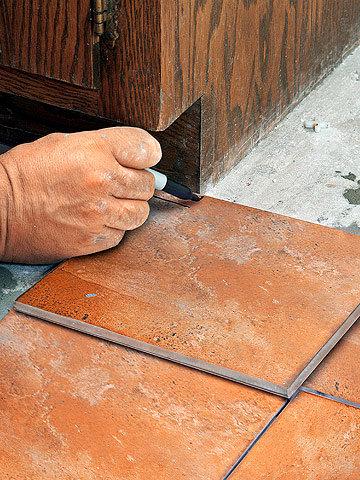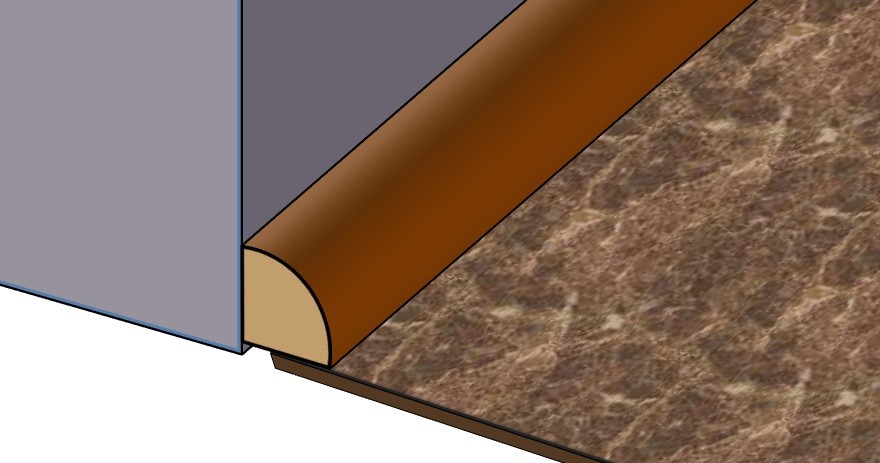09 Aug What Comes First: Flooring or Cabinets?
We went to BuildDirect.com for a little insight into the order of things.
There are many advantages to a complete kitchen remodel. You can make it up-to-the-minute modern, and that will contribute to great appeal for  potential buyers should you decide to sell. You also add value to your home. But it doesn’t come easy – a quality remodel can be a huge challenge. But you can make it easier. There are established steps to follow that are proven to help streamline the process and guarantee that your vision is fully realized in the final physical results. The game plan can vary however, and you have the unique choice of whether to install your new kitchen cabinets first or to start with the doors. There are pros and cons to either sequence, and thanks to BuildDirect.com, they’ve been sorted out for us…
potential buyers should you decide to sell. You also add value to your home. But it doesn’t come easy – a quality remodel can be a huge challenge. But you can make it easier. There are established steps to follow that are proven to help streamline the process and guarantee that your vision is fully realized in the final physical results. The game plan can vary however, and you have the unique choice of whether to install your new kitchen cabinets first or to start with the doors. There are pros and cons to either sequence, and thanks to BuildDirect.com, they’ve been sorted out for us…
If you are among those that don’t care for the task of cutting the flooring material around the framework of cabinets and appliances, you would probably prefer to install the floors first. In fact, this is a primary motivation for those who start from the ‘ground up’. They consider the further possibility of being stuck with the outline that’s been cut into the flooring if they decide to switch out cabinets later – the corresponding sizes would have to be precise. Of course, if you’re just now doing a remodel, making serious changes probably won’t be on the agenda for a long time. Ultimately, putting the flooring down before installing the base cabinets provides a neat appearance when they’re in and makes the chore of installing cabinet quarter rounds unnecessary.
You are watching: What Comes First: Flooring or Cabinets?
 On the other hand, covering the entire kitchen floor, which means under the cabinets as well, simply serves to waste your flooring material. When you consider that you won’t ever see the flooring underneath the appliances and cabinets, you realize that you’re paying for useless excessive material. Beyond that, if you decide to tear the floor out someday, the cabinets will also have to come out in order to release the portion of flooring they’ve long concealed. It’s a costly renovation and certainly not one you’d want to inherit. Also of importance is the fact that the material you choose can have a potential effect on the order of the installation steps. Since wood floors will contract and expand as the temperatures change and moisture increases or decreases, it needs room to breathe. Having the floor installed tightly beneath the cabinets could result in buckling and subsequent damage. It’s a popular reason why a hardwood floor installation must be done after putting in the cabinets. If the flooring is in good enough condition that only a hardwood flooring refinishing is required, this should also be done first, preferably. Also of note, like the last example, floating floors are prohibitive because cabinets are entirely too heavy and will surely prevent the floor from being able to expand and contract naturally. The result – the floor comes apart.
On the other hand, covering the entire kitchen floor, which means under the cabinets as well, simply serves to waste your flooring material. When you consider that you won’t ever see the flooring underneath the appliances and cabinets, you realize that you’re paying for useless excessive material. Beyond that, if you decide to tear the floor out someday, the cabinets will also have to come out in order to release the portion of flooring they’ve long concealed. It’s a costly renovation and certainly not one you’d want to inherit. Also of importance is the fact that the material you choose can have a potential effect on the order of the installation steps. Since wood floors will contract and expand as the temperatures change and moisture increases or decreases, it needs room to breathe. Having the floor installed tightly beneath the cabinets could result in buckling and subsequent damage. It’s a popular reason why a hardwood floor installation must be done after putting in the cabinets. If the flooring is in good enough condition that only a hardwood flooring refinishing is required, this should also be done first, preferably. Also of note, like the last example, floating floors are prohibitive because cabinets are entirely too heavy and will surely prevent the floor from being able to expand and contract naturally. The result – the floor comes apart.
Read more : How To Keep Dish Rags From Smelling
 Of course, you can avoid many of these trappings by starting with the cabinets and installing them first. No time or money will be wasted on ‘hidden’ flooring. Also, your floor is less likely to experience damage in the form of dents or scratches when you put the cabinets in first. On the other hand, starting with them means you establish a permanent footprint you’ll have to adhere to if there are to be any renovations in the future. This means that you’ll have to cut into the flooring around the base cabinets in order for them to fit properly. In such case expect the expenses to increase due to complicated and time consuming installation. Built-in appliances will also be an adverse factor in this scenario as they will essentially be trapped. Swapping them out will be much more difficult. Rejecting appliance models that are designed to be built-in may become a necessary choice in order to solve the issue.
Of course, you can avoid many of these trappings by starting with the cabinets and installing them first. No time or money will be wasted on ‘hidden’ flooring. Also, your floor is less likely to experience damage in the form of dents or scratches when you put the cabinets in first. On the other hand, starting with them means you establish a permanent footprint you’ll have to adhere to if there are to be any renovations in the future. This means that you’ll have to cut into the flooring around the base cabinets in order for them to fit properly. In such case expect the expenses to increase due to complicated and time consuming installation. Built-in appliances will also be an adverse factor in this scenario as they will essentially be trapped. Swapping them out will be much more difficult. Rejecting appliance models that are designed to be built-in may become a necessary choice in order to solve the issue.
So, there are inherent pros and cons to either order of installation. You could deduce that there are more risks in laying flooring down first, but ultimately it’s up to you to weigh the factors and decide what’s best for your project. From the start, carefully choose your materials and appliances and try to determine what your future plans for the kitchen will be. If you want a floor that is suitable for very intensive use, such as an industrial setting, then choose an epoxy-based resin flooring system at https://resinflooringinstallation.co.uk. If you’re working with a contractor, determine if you are on the same page. It’s important that all involved parties share the same goals. With a clear understanding of the circumstances, you are better likely to make the most of your project and be satisfied with your choices.
Source: https://gardencourte.com
Categories: Kitchens


